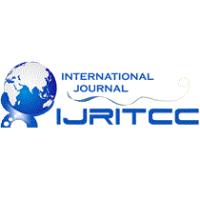Article,
Application of Artificial Neural Network for Height Modelling
International Journal on Recent and Innovation Trends in Computing and Communication, 3 (3): 1374--1377 (March 2015)
DOI: 10.17762/ijritcc2321-8169.1503103
Abstract
Levelling in surveying is the term stand for height difference determination between ground points. If a datum surface is defined for the observed points, the heights of these points (reduced levels) can be computed. In ordinary orthometric levelling Geoid surface is usually used as a datum. Levelling process can be carried out using different survey equipments and techniques. It may be precise; when precise optical or digital levels are used, or it may be ordinary; when using ordinary optical, automatic or digital levels. Moreover it can be carried out trigonometrically or barometrically. Now a day Global Positioning System (GPS) provides a quick modern technology to determine heights of points 4. Leveling procedure can be considered as one of the most costly procedures. However; some mathematical models are used for condensing spot heights with a relatively low cost. Artificial neural networks appeared as one of the prediction methods used in many disciplines. Although it is widely applied in different fields, but it is not widely used in surveying applications. The objective of this research is to test the possibility of using artificial neural networks method for height modelling in different topographic areas, and assessing its resultant precision in comparison with currently used algorithms, taking into account two factors; number of iterations and random seed number (a value that used to stabilize the weight selection). Results showed that artificial neural networks can successfully be used in height modelling. It produced height precisions of 97%, 97.39, and 93.63% for flat, gently rolling and mountainous areas respectively. These precisions are sufficiently enough for many survey applications. Moreover, an artificial neural networks technique can produce better results compared with kriging method
Tags
- (dem)
- (tin)
- artificial
- digital
- elevation
- irregular
- kriging
- levelling
- method
- model
- network
- networks(ann)
- neural
- triangulated
